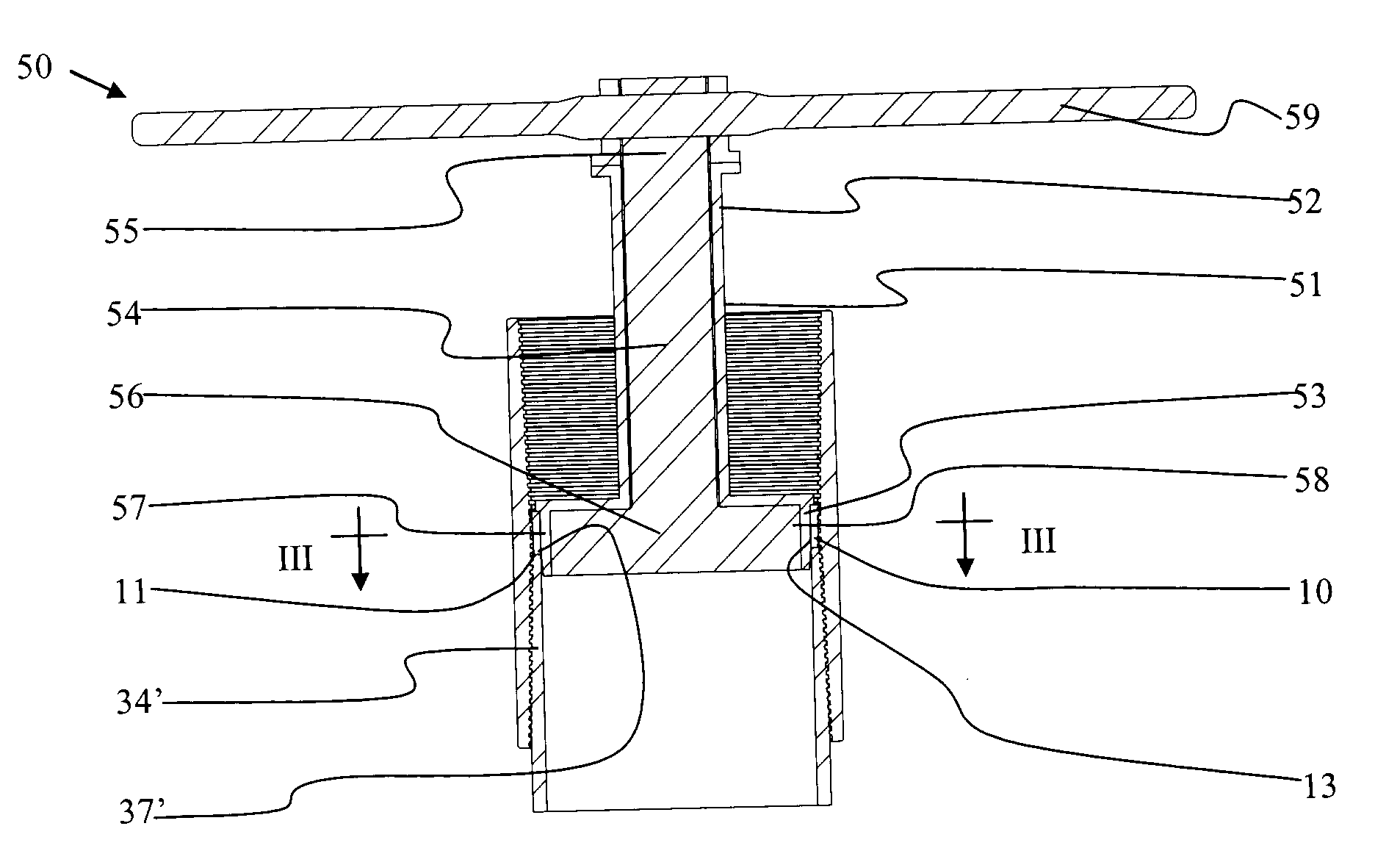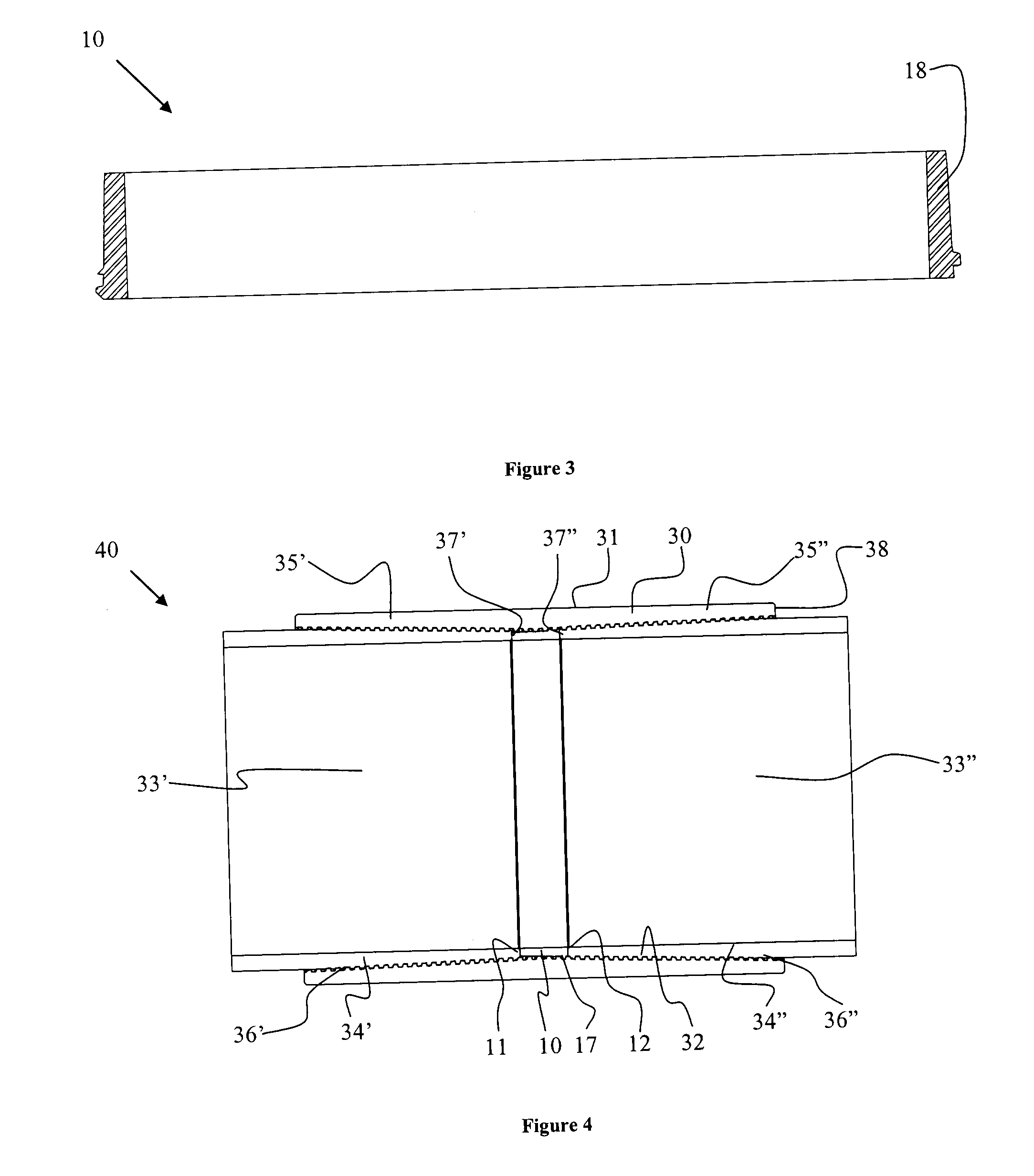Shoulder ring with axial retention means, and tools for installing same
a technology of axial retention and shoulder rings, which is applied in the field of shoulder rings and tools for installing shoulder rings, can solve the problems of changing the performance requirements affecting the performance of the casing string, and limited torque capacity of the connection
- Summary
- Abstract
- Description
- Claims
- Application Information
AI Technical Summary
Benefits of technology
Problems solved by technology
Method used
Image
Examples
Embodiment Construction
General Concepts
[0054]In accordance with the present invention, a shoulder ring is provided for placement in a threaded and coupled connection, such as a standard API connection, joining two lengths or joints of tubulars.
Shoulder Ring with Thread Element
[0055]According to a preferred embodiment of the present invention, as shown in FIG. 1, shoulder ring 10 has a mill end face 11 and a field end face 12, with an inner surface 13 extending between the mill end and field end faces. Outer face 14 of ring 10 has mill end 15 and thread element 17 at field end 16. Ring 10 as shown in FIG. 1 has a generally lobate shape; in the embodiment shown in FIG. 1, ring 10 has four lobes 20, with four lobe valleys 21 and four lobe peaks 22. Although it will be appreciated that the shoulder ring of the present invention may have two or more lobes (or zero lobes) if desired, the shoulder ring preferably is formed with a plurality of lobes designed to provide an effective hoop stiffness as required by t...
PUM
 Login to View More
Login to View More Abstract
Description
Claims
Application Information
 Login to View More
Login to View More - R&D
- Intellectual Property
- Life Sciences
- Materials
- Tech Scout
- Unparalleled Data Quality
- Higher Quality Content
- 60% Fewer Hallucinations
Browse by: Latest US Patents, China's latest patents, Technical Efficacy Thesaurus, Application Domain, Technology Topic, Popular Technical Reports.
© 2025 PatSnap. All rights reserved.Legal|Privacy policy|Modern Slavery Act Transparency Statement|Sitemap|About US| Contact US: help@patsnap.com



